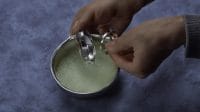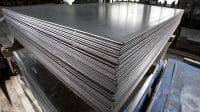Stainless steel is a popular material used in various industries due to its durability and resistance to corrosion. However, it is still susceptible to rust and other forms of corrosion if not properly maintained. This is where passivation comes in as an essential process in ensuring the longevity and quality of stainless steel pipes.
In this guide, we will discuss the fundamentals of passivation, its importance in maintaining stainless steel pipes, and the best practices to follow for successful passivation. Additionally, we will briefly touch on how stainless steel is manufactured.
Key Takeaways:
- Passivation is crucial in maintaining the quality and longevity of stainless steel pipes.
- This guide will cover the basics of passivation, including its process and importance.
- Best practices for successful passivation, as well as common misconceptions, will also be discussed.
What is Passivation?
Passivation is a process that is commonly used to remove impurities from the surface of stainless steel pipes. This procedure involves the use of chemicals or electrochemical methods to create a passive oxide layer on the surface of the steel, which enhances its corrosion resistance and extends its lifespan. Passivation is an essential step in maintaining the quality and durability of stainless steel pipes, particularly those used in critical applications, such as food processing, pharmaceuticals, and medical devices.
Passivation of stainless steel pipe is critical to ensure its longevity and maintain its performance.
The passivation process removes contaminants, such as free iron, oil, grease, and other surface contaminants that may have accumulated during manufacturing, handling, or storage. These impurities can cause corrosion, oxidization, and rusting, which can weaken the structural integrity of the pipes and cause them to fail prematurely. Passivation eliminates these impurities and creates a clean, smooth surface that is more resistant to corrosion and easier to maintain.
The passivation process can be accomplished using either chemical or electrochemical methods, depending on the specific application requirements and the type of stainless steel being used. In some cases, a combination of these methods may be used to achieve optimal results.
Why is Passivation Important for Stainless Steel Pipes?
Passivation is a critical process in maintaining the quality of stainless steel pipes. The passivation process removes impurities from the surface of the stainless steel, creating a protective layer that enhances the corrosion resistance of the material. Without passivation, stainless steel pipes are susceptible to rusting, corrosion, and other forms of degradation.
By passivating stainless steel pipes, one can ensure that they remain clean and free from contamination, which is especially crucial in the food and beverage industry. Passivation also helps to prevent the breakdown of the material, which can lead to leaks, structural damage, and other issues that compromise the pipe’s integrity.
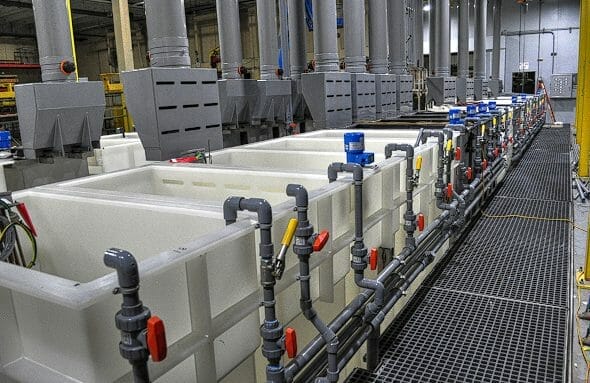
Why is Passivation Important for Stainless Steel Pipes? The Significance of Corrosion Prevention
Corrosion is a major concern in the maintenance of stainless steel pipes. Corrosion occurs when the surface of the stainless steel reacts with its environment, which can cause the material to break down over time. Corrosion can lead to leaks, pitting, and other forms of damage that compromise the structural integrity of the pipe.
Passivation helps to prevent corrosion by creating a protective layer on the surface of the stainless steel. The passivating agent removes impurities from the surface of the metal, creating a clean, smooth layer that is less prone to corrosion. The passivating agent also helps to neutralize any corrosive elements on the surface of the metal, preventing them from doing damage to the stainless steel.
Why is Passivation Important for Stainless Steel Pipes? The Significance of Cleanliness
Passivation also helps to maintain the cleanliness of stainless steel pipes. Over time, stainless steel pipes can become contaminated with dirt, oil, and other substances that can compromise the quality of the material. By passivating the stainless steel, one can create a clean, smooth surface that is less prone to contamination.
This is particularly important in the food and beverage industry, where the cleanliness of stainless steel pipes is essential to prevent the growth of bacteria and other microorganisms. By passivating the stainless steel, one can ensure that it remains free from contamination and meets the necessary sanitation standards.
How is Passivation Done?
Passivation is typically done through either chemical or electrochemical methods. Each method has its own unique benefits and considerations, and the choice of method will depend on various factors such as the type of stainless steel being used and the desired final outcome.
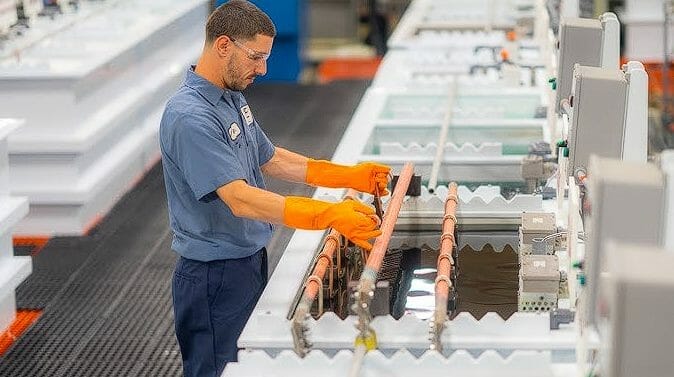
Chemical Passivation
Chemical passivation involves the use of a passivating solution or paste to remove any impurities or contaminants from the surface of the stainless steel pipe. This process is typically done by immersing the stainless steel pipes in the solution or applying the paste to the surface with a brush or sponge, and allowing it to sit for a specified period of time.
| Pros | Cons |
|---|---|
|
|
Electrochemical Passivation
Electrochemical passivation involves the use of an electrical current and a passivating solution to remove any impurities or contaminants from the surface of the stainless steel pipe. This process is typically done by using an electrode to apply the passivating current to the surface of the stainless steel pipe, while the passivating solution is circulated through the pipe.
| Pros | Cons |
|---|---|
|
|
Both chemical and electrochemical methods can be effective forms of passivation, and the choice of method will depend on various factors such as the specific application and desired final outcome. It is important to follow proper safety precautions when performing either method, including wearing appropriate personal protective equipment and ensuring proper disposal of any passivating solution or waste.
Factors to Consider in Passivating Stainless Steel Pipes
Passivation is a crucial process in enhancing the corrosion resistance and longevity of stainless steel pipes. However, several factors must be taken into account to ensure a successful passivation process.

Surface Condition
The surface preparation of stainless steel pipes is critical in the passivation process. The surface must be free from contaminants such as oil, grease, and dirt. Any surface defects such as scratches, cracks, and pits must be repaired before passivation. A clean surface ensures that the passivating agent penetrates the metal’s surface, promoting a uniform and effective passivation layer.
Temperature
The temperature of the passivating solution affects the rate of the passivation process. High temperatures reduce the time required to form a passivation layer. However, excessively high temperatures can cause the passivating agent to break down, reducing the effectiveness of the passivation process.
Choice of Passivating Agent
The choice of the passivating agent used depends on the type of stainless steel pipes being passivated. Different types of stainless steel require different passivating agents. For instance, nitric acid is suitable for passivating austenitic stainless steels, while citric acid is used for ferritic and martensitic stainless steels. The passivating agent must be compatible with the metal being passivated to ensure a uniform and durable passivation layer.
Post-Treatment Procedures
After passivation, it is essential to rinse the stainless steel pipes with clean water to remove any residual passivating agent. This step helps to prevent contamination and ensure the longevity of the passivation layer. Additionally, if the stainless steel pipes are to be welded, it is important to re-passivate the welded area to restore the passivation layer’s integrity.
Passivation Process and Safety Precautions
Passivation is a crucial process that helps remove impurities and promotes the longevity and durability of stainless steel pipes. Here’s a step-by-step guide on how to passivate stainless steel pipes and some safety precautions to ensure a successful process.
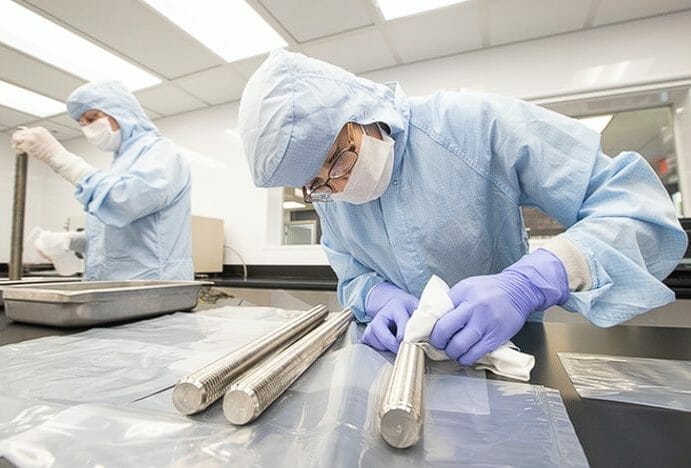
Cleaning the Surface
The first step in passivation is to clean the surface of the stainless steel pipe. Any dirt, oil, grease, or other contaminants must be removed to ensure that the passivating agent can do its job effectively. This can be done using a degreasing solution, such as trichloroethane or acetone, followed by a thorough rinse with water.
Application of Passivating Agent
Next, the passivating agent is applied to the surface of the stainless steel pipe. There are two main types of passivation agents: chemical and electrochemical. Chemical passivation involves dipping the pipe in a solution of nitric acid and water, while electrochemical passivation involves applying an electric current to the pipe while it is in contact with a solution of nitric acid and water.
Regardless of which method is used, it is important to ensure that the passivating agent is in contact with the surface of the stainless steel pipe for the recommended amount of time. This allows the agent to remove any remaining impurities and enhance the corrosion resistance of the pipe.
Post-Treatment Procedures
Once the passivating agent has been applied, the pipe must be rinsed thoroughly with water to remove any remaining traces of the passivating agent. It is important to note that passivating agents can be corrosive, so it is essential to handle them with care and follow all safety precautions.
Safety Precautions
When passivating stainless steel pipes, it is important to follow some safety precautions to avoid any accidents or mishaps. These include wearing protective clothing, gloves, and eye protection, and ensuring that the passivating agent is used in a well-ventilated area.
You should also avoid inhaling any fumes that may be released during the passivation process and make sure that any tools used in the process are properly cleaned and stored after use.
By following these steps and taking the necessary safety precautions, you can ensure that your stainless steel pipes are effectively passivated and will perform well over time.
Benefits of Passivation for Stainless Steel Pipes
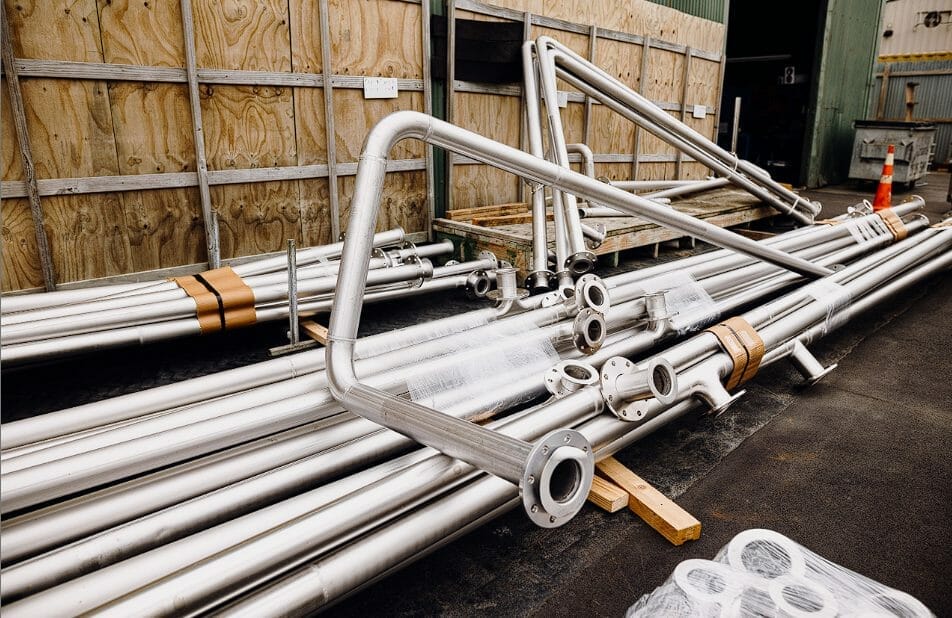
Passivation is a vital process for stainless steel pipes, and it offers a range of benefits that make it worth the investment in time and resources. Here are some of the key advantages of passivating your stainless steel pipes:
| Benefits | Description |
|---|---|
| Prevents Corrosion | Passivation eliminates impurities and creates a passive layer on the surface of the stainless steel, which protects the material from corrosion and oxidation. This improves the lifespan of the pipes and reduces the need for expensive repairs or replacements. |
| Promotes Cleanliness | Passivation removes surface contaminants and residual oils from the manufacturing process, which can harbor bacteria and lead to contamination. This makes the pipes easier to clean and maintain, reducing the risk of product contamination or failure. |
| Improves Performance | Passivation enhances the corrosion resistance and overall performance of the stainless steel, making it more durable and reliable. This is particularly important for applications in harsh or corrosive environments, where the pipes are exposed to chemicals, salt water, or extreme temperatures. |
| Enhances Aesthetics | Passivation can improve the appearance of stainless steel pipes by restoring their original luster and shine. This can be particularly beneficial for applications where aesthetics are important, such as architectural, automotive, or decorative uses. |
| Reduces Maintenance | Passivation reduces the need for maintenance and repairs by preventing corrosion and maintaining the cleanliness and performance of the pipes. This can save time and money over the lifespan of the pipes, making it a cost-effective solution in the long run. |
Overall, passivation is a crucial process to ensure the quality and longevity of stainless steel pipes. The benefits of passivation make it a worthwhile investment for any industry that relies on stainless steel pipes for their operations.
Best Practices for Passivation
Proper passivation is critical to ensuring the longevity and performance of stainless steel pipes. Here are some best practices to follow:
- Surface preparation: Prior to passivation, ensure that the stainless steel surface is clean and free of any contaminants, such as oil, grease, or dirt. This can be achieved through mechanical methods, such as blasting or grinding, or through a chemical cleaning process.
- Passivating agent selection: The choice of passivating agent will depend on the specific grade of stainless steel being used and the intended application. It is important to follow the manufacturer’s recommendations and to select an agent that is compatible with the stainless steel grade.
- Passivation conditions: The passivation process should be carried out under controlled conditions, including temperature, concentration, and exposure time. Improper conditions can lead to incomplete passivation or even cause damage to the stainless steel surface.
- Post-treatment: After passivation, it is important to rinse the surface thoroughly with water to remove any residual passivating agent. The surface should then be dried and inspected for any signs of staining or discoloration. If staining is observed, additional cleaning or passivation may be required.
- Regular maintenance: Passivation is not a one-time process and must be repeated periodically to maintain the quality and performance of stainless steel pipes. Regular cleaning and upkeep can also help to prevent corrosion and extend the lifespan of the pipes.
By following these best practices, you can ensure successful passivation and optimal performance of your stainless steel pipes.
Common Misconceptions About Passivation
Passivation is a critical process for maintaining the performance of stainless steel pipes. However, there are some common misconceptions surrounding this process that may lead to confusion or misinformation. Here are some of the most common myths:
- Passivation is the same as pickling. While both processes involve removing impurities from stainless steel, they are not the same. Pickling involves using an acidic solution to remove surface contaminants, whereas passivation enhances the corrosion resistance of the metal by creating a protective oxide layer.
- Passivation is a one-time process. While passivation is typically performed after initial manufacturing or after extensive repairs, it may also need to be repeated periodically to maintain the quality of the stainless steel pipes. This is especially true in harsh environments or when the pipes are subject to high temperatures or stress.
- Passivation can completely prevent rusting. While passivation does create a protective layer on the surface of the stainless steel pipes, it is not foolproof. In certain conditions, such as exposure to certain chemicals or abrasives, the passivation layer may break down, leaving the metal susceptible to corrosion.
- Passivation can be done by anyone. Passivation requires careful preparation, proper equipment, and expertise in order to be performed safely and effectively. Improper passivation procedures can lead to damage to the stainless steel or even injury to the operator.
It is important to dispel these common myths and to recognize the value of proper passivation for stainless steel pipes. By understanding the true nature of the passivation process, we can ensure that our stainless steel pipes remain durable, corrosion-resistant, and safe for use in a wide range of applications.
Conclusion
Passivation is a crucial process that ensures the longevity and performance of stainless steel pipes. By removing impurities and enhancing corrosion resistance, passivation helps to prevent damage and maintain the quality of pipes over time. It is important to consider factors such as surface condition, temperature, and choice of passivating agent when undertaking passivation; and to follow proper safety precautions during the process.
Through successful passivation, stainless steel pipes can enjoy extended lifespans, improved aesthetics, and reduced maintenance requirements. Best practices such as proper surface preparation, correct passivating agent selection, and regular maintenance will further contribute to the effectiveness of the process.
It is important to dispel common misconceptions or myths surrounding passivation. By understanding the process and its significance, we can ensure that stainless steel pipes remain durable and perform to their fullest potential. Remember, whether you’re in the construction industry or manufacturing, passivation of stainless steel pipes is an important consideration for the long-term success of your project.
Read More : Your Source for 904l Stainless Steel Pipe – Premium Quality
What are the Benefits of Using 321 Stainless Steel Compared to 304 Stainless Steel?
When comparing the differences between 304 and 321 stainless steel, several benefits of the latter become apparent. 321 stainless steel provides increased corrosion resistance, making it suitable for high-temperature environments. It also exhibits improved resistance to intergranular corrosion and is less prone to sensitization during welding. These properties make 321 stainless steel a preferable choice for applications in the aerospace, automotive, and chemical industries.
Why is Passivation Important for Stainless Steel Pipes?
Passivation is an essential process for stainless steel pipes to enhance their corrosion resistance. By removing contaminants and forming a protective oxide layer, passivation safeguards against rusting and staining. It ensures longevity, integrity, and optimal performance of stainless steel pipes. For accurate installation and maintenance, stainless steel pipe weight calculation tips are crucial to prevent potential mishaps and ensure proper handling of the pipes.
FAQ
Q: What is passivation of stainless steel pipe?
A: Passivation is the process of treating stainless steel pipes with a chemical solution to remove impurities and enhance their corrosion resistance.
Q: Why is passivation important for stainless steel pipes?
A: Passivation is important for stainless steel pipes because it helps prevent corrosion, promotes cleanliness, and improves overall performance.
Q: How is passivation done?
A: Passivation can be done using different methods, such as chemical passivation or electrochemical passivation.
Q: What factors should be considered in passivating stainless steel pipes?
A: Factors to consider in passivating stainless steel pipes include surface condition, temperature, and the choice of passivating agent.
Q: What is the passivation process for stainless steel pipes and what safety precautions should be taken?
A: The passivation process involves cleaning the pipes, applying the passivating agent, and following post-treatment procedures. It is important to follow safety precautions during the passivation process.
Q: What are the benefits of passivation for stainless steel pipes?
A: Passivation offers benefits such as extended lifespan, improved aesthetics, and reduced maintenance requirements for stainless steel pipes.
Q: What are some best practices for passivation?
A: Best practices for passivation include proper surface preparation, correct passivating agent selection, and regular maintenance of stainless steel pipes.
Q: What are common misconceptions about passivation?
A: Common misconceptions about passivation include misunderstandings about its purpose and effectiveness. It is important to have accurate information about the process.



